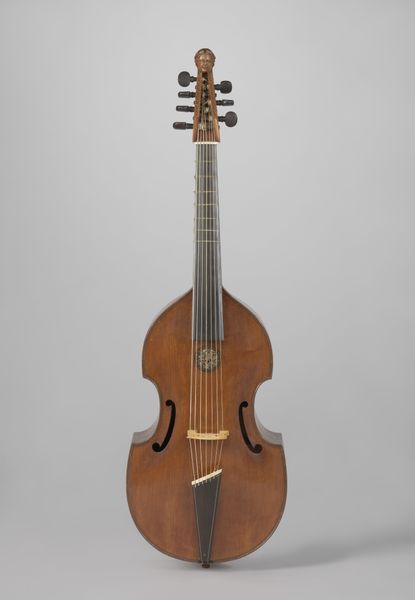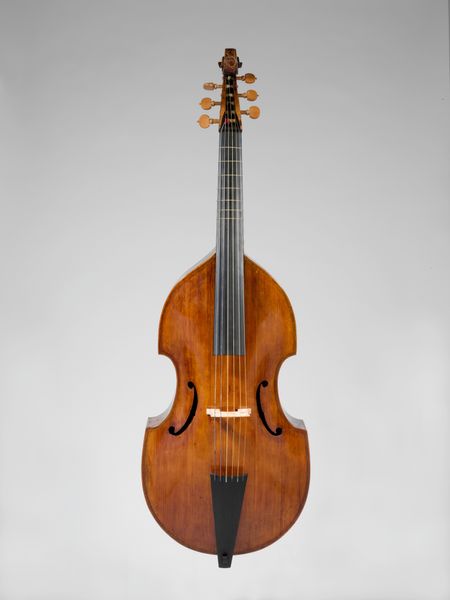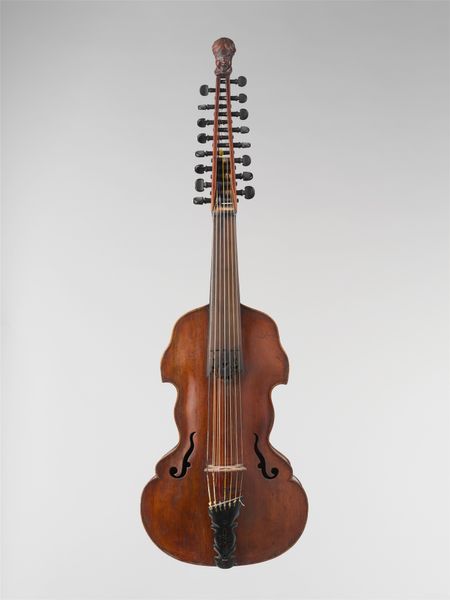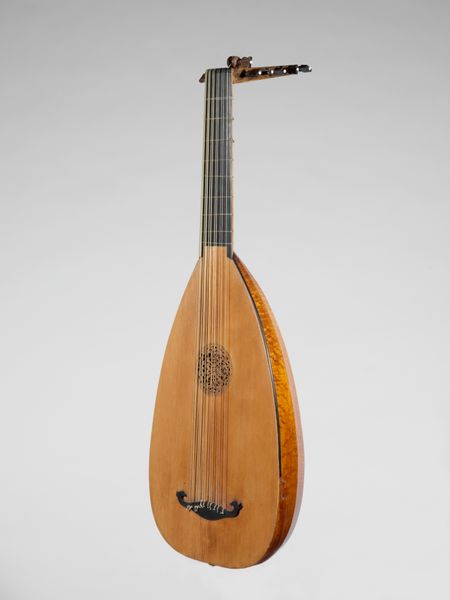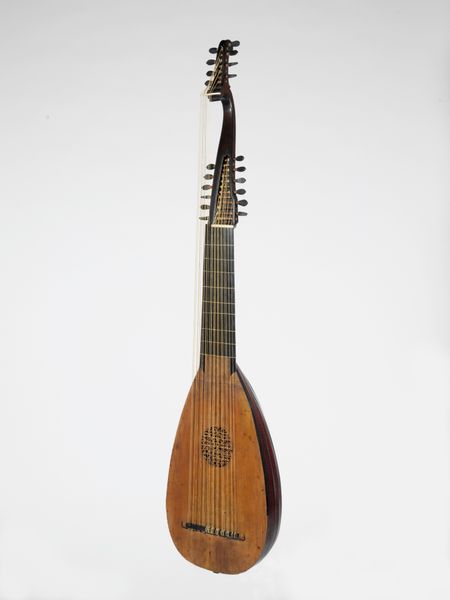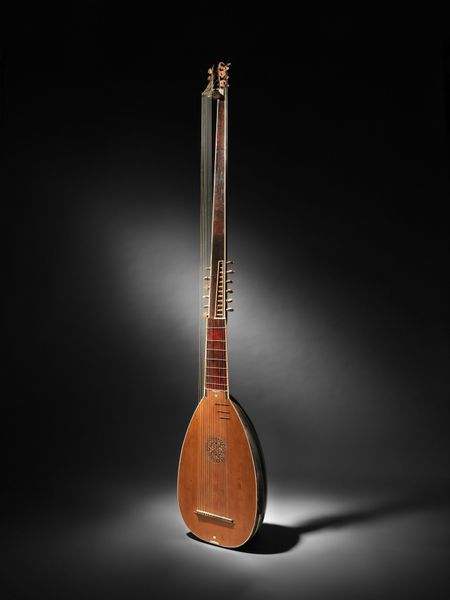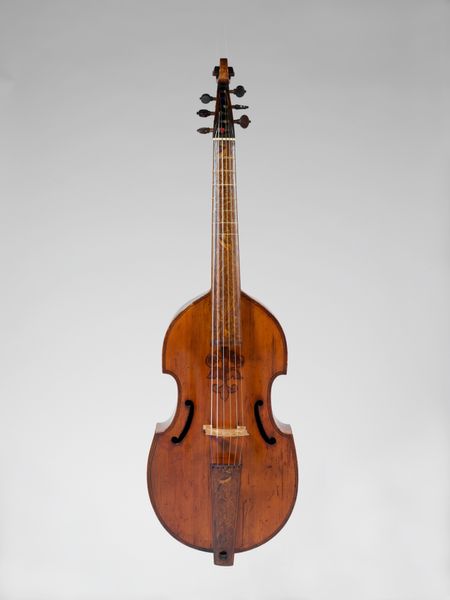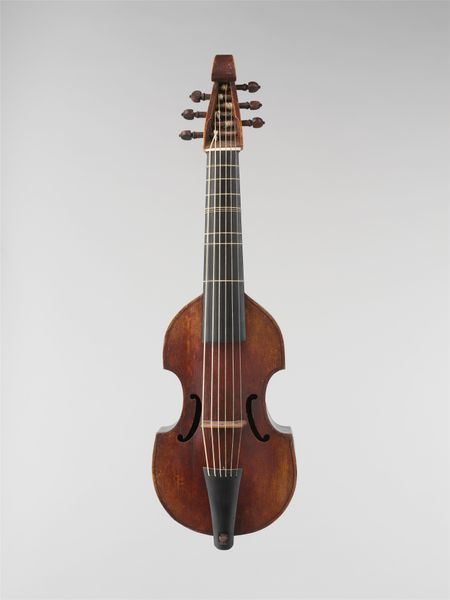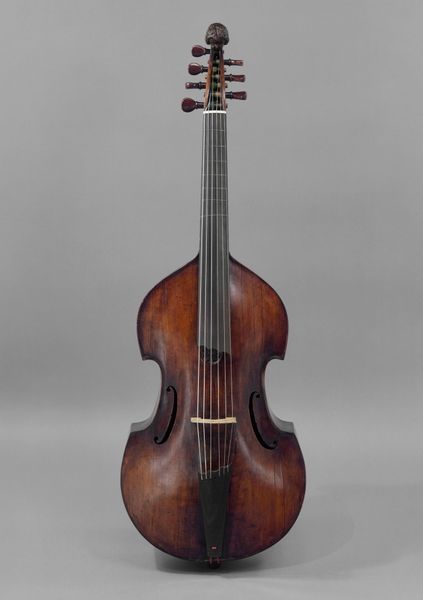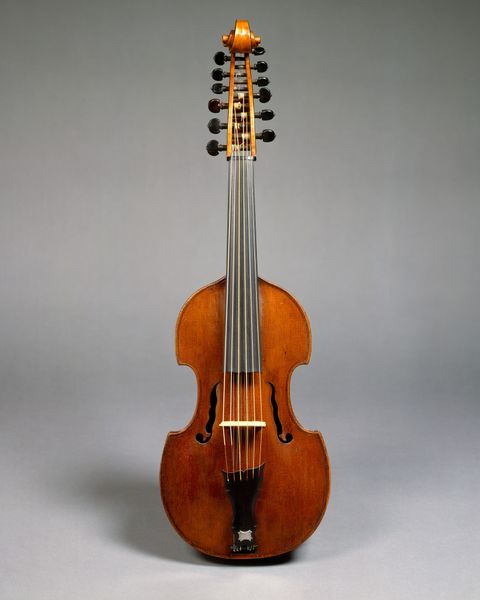
sculpture, wood
#
portrait
#
sculpture
#
france
#
wood
#
musical-instrument
#
modernism
Dimensions: Total length: 605 mm Body length: 352 mm
Copyright: Public Domain
Editor: Here we have the "Savart model" Violin, made of wood, sometime between 1799 and 1839, currently held at the Metropolitan Museum of Art. What strikes me most is its unconventional shape—it’s triangular! How do you interpret this work, considering its place in history? Curator: This “Savart model” invites us to consider the intersection of art, science, and social reform in the 19th century. Felix Savart wasn’t just an instrument maker; he was a physicist who aimed to improve the violin’s sound using acoustic principles. Editor: That's fascinating! So, it's a critique of traditional violin-making? Curator: Precisely! Think about it: during this period, the Enlightenment's emphasis on reason was influencing all aspects of society. Savart was questioning established norms, much like other reformers who were challenging traditional hierarchies. By altering the violin's shape, he was advocating for a re-evaluation of artistic craftsmanship through scientific inquiry. Did his changes democratize music or, instead, create exclusivity through supposed knowledge? Editor: I hadn’t thought of it that way. It raises questions about accessibility to the arts! It's more than just an instrument; it embodies broader societal tensions. Curator: Absolutely. This violin prompts us to analyze who has the authority to define "improvement" and who benefits from these changes. How does this push boundaries similar to modern works we see today? Editor: I'm struck by the resonance this object has with contemporary discussions about expertise, authority, and cultural value. Curator: Indeed. It’s a reminder that even seemingly straightforward objects can be powerful agents in shaping our understanding of the world.
Comments
No comments
Be the first to comment and join the conversation on the ultimate creative platform.
